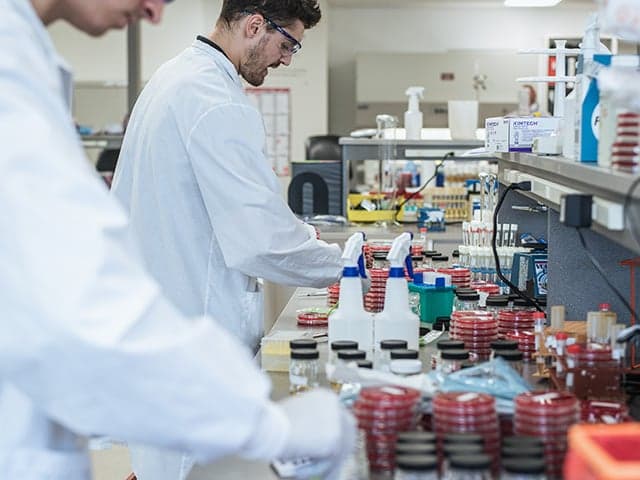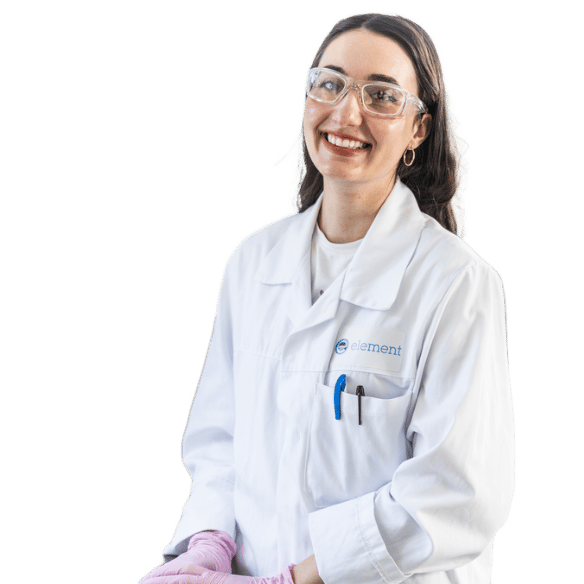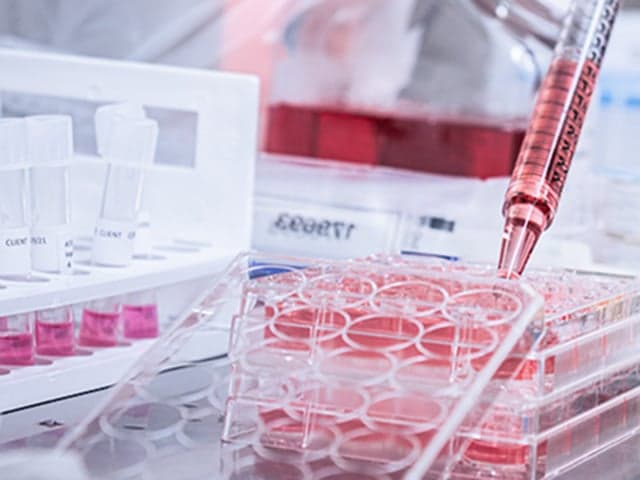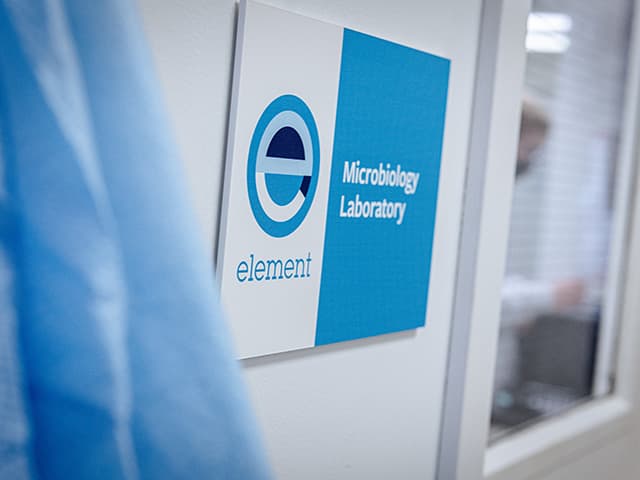Microbiology Testing of Treated Articles
Our microbiology testing of treated articles combines 30+ years of expertise with comprehensive testing solutions and technical testing expertise. From early development through final submission, we provide custom protocols, specialized methodologies, and secure 24/7 result access to help you validate claims, achieve compliance, and streamline your antimicrobial product's path to market.

What is Microbiology Testing of Treated Articles at Element?
Treated articles are products incorporating antimicrobial properties to protect the item itself. At Element, we provide comprehensive testing services to validate antimicrobial efficacy and support regulatory claims. Our testing encompasses the full spectrum of treated articles, from textiles to industrial materials, helping you verify product performance according to established methodologies with clear documentation of results and interpretation.

What can Element offer you for Microbiology Testing of Treated Articles service
Components and materials we test
Components and materials we test
Partner with us for complete antimicrobial efficacy testing across diverse materials. Our expertise covers textile materials, polymeric substances, hard surfaces, and hydrophobic materials, ensuring comprehensive validation of your treated articles' antimicrobial properties.
Key tests offered
Key tests offered
- Antimicrobial activity testing
- Antibacterial finishes assessment
- Mildew fungistatic testing
- Surface-bound antimicrobial testing
- Custom protocol development for specific needs
Methods and solutions offered
Methods and solutions offered
Access established methodologies including ASTM E2149, ASTM E2180, AATCC 100, and JIS Z 2801/ISO 22196. Our consultative approach helps you select the right testing protocol for your specific claims and regulatory requirements, with the capability to develop custom solutions when needed.
ASTM E2149: Tests antimicrobial activity by shaking treated samples in a microbial suspension (typically E. coli) and measuring log reduction after exposure.
ASTM E2180: Evaluates antimicrobial properties of polymeric or hydrophobic materials by inoculating a treated surface with a microbial slurry and assessing log reduction after 24 hours against organisms such as S. aureus, P. aeruginosa, and K. pneumoniae.
AATCC 100: Assesses antibacterial finishes on textiles by exposing treated samples to microbes (S. aureus, K. pneumoniae), incubating, and measuring log reduction.
Mildew Fungistatic Test: Determines effectiveness of antimicrobial treatments on fabrics or hard surfaces by evaluating mold growth (Aspergillus niger) under high humidity conditions for products considered effective mildew fungicides.
JIS Z 2801/ISO 22196: Measures antimicrobial activity of surface treatments using international standards, with results expressed in percent and log reduction.
Which labs offer this service
Which labs offer this service
Element Eagan serves as our premier antimicrobial testing facility, supported by our global network of experts.
Comprehensive Support
Comprehensive Support
Get end-to-end support from early-stage development through final GLP testing. Our secure client portal provides 24/7 access to your test results, streamlining data management and regulatory documentation. For products requiring nonstandard approaches, we can develop custom protocols to meet your specific testing needs.
Standards we test to and materials we test
Antimicrobial-treated materials:
- Textiles and fabrics
- Paints and coatings
- Rubber products
- Polymeric materials
- Hard surfaces
- Hydrophobic materials
- Surface-treated articles
Your Challenges, Our Solutions
Navigating Complex Regulations
Testing Method Selection
Performance Validation Uncertainty
Product Development Support
Why Choose Element

Trusted Industry Experience
Comprehensive Testing Solutions
Custom Protocol Development
Direct Access to Experts
30+years
24/7access
1000sof successful

Frequently asked questions
What types of claims can be validated through treated article testing?
We support validation for general antimicrobial claims, antibacterial properties, and mildew resistance through established test methods like ASTM E2149, ASTM E2180, and AATCC 100. For many of these methods, no regulated reduction limits exist, with performance criteria typically determined by the sponsor. We can help you understand appropriate parameters for your specific applications.
How do you ensure testing meets regulatory requirements?
Our technical experts stay current with testing methodologies and industry standards. We provide comprehensive documentation of test results including log reduction and percent reduction measurements, delivering the data needed to support your treated article claims and registration.

Explore our global network of labs and find your nearest location
VIEW ALL LOCATIONSRelated services

Virology Testing
Element delivers GLP-compliant virology testing for antimicrobial products, helping companies meet global regulations, validate claims, and accelerate time to market with expert-led, reliable data.

Antimicrobial Microbiology Testing Services
Element's knowledgeable microbiologists can test to multiple established methods, as well as developing custom protocols.
